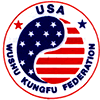| |
- Of the three requirements of Buddhist Practice (Conviction, Practice, Study) Gongyo can represent all three in the form of Study, as Practice bringing about conviction or determination.
- The Buddha taught to study broadly all teachings, Buddhist and non-Buddhist.
- Gongyo is a combination of two core Buddha teachings and teh affirmation of the fundamental aspects of practice through meditations.
- Gongyo invokes the three cause-making aspects of human life, thought, word, and deed.
One powerful aspect of the recitations of Gongyo is the unification of our mortal experience with that of our
inherent Buddha-nature. Sound is an integral component of the differentiation of all physical matter. As we chant
the "daimoku" of the Lotus Sutra we create a vibration of all the atoms in our body. We also
while doing Gongyo, ring a bell. It is our effort to recite clearly and correctly the words of Buddha, and our chanting to achieve resonance with the bell sound where we begin to unify
and purify all our senses toward the Buddha nature.
This recitation of Gongyo involves our commitment in physical presence
before an appropriately enshrined Gohonzon or altar. This is Cause by deed. Gongyo also involves vocalization, Cause by mouth or word. And, finally
Gongyo requires concentration and focus thereby training our minds in conviction and to control our thoughts, Cause by Thought
The Study inherent in the five meditations of Gongyo
First meditation
In the first meditation we focus our thoughts of gratitude to the Shoten Zenjin. The names of the Shoten Zenjin listed are derived from the history of Buddhism throughout many Asian cultures. The strengths and special characteristics of each of them are strictly symbolic. The deeper meaning of this meditation is to acknowledge the presence of our essential Buddha-nature functioning within our lives. Those moments when we cannot explain our sudden acumen or our extreme good fortune in the face of tremendous peril or challenge. We have all had those moments when either as it happened or in retrospect we cannot fathom the powers that kept us from grievous harm or tremendous embarrassment, or even when we succeeded so well at some endeavor that we feel we were especially endowed for just that moment. These are the forces from deep within our lives that we have brought with us into our journey of Samsara and which will follow us back into the quiescence of eternity.
Second meditation
The second meditation expresses our appreciation for the teachings of the Buddha. We start with the fundamental and essential law of self-manifestation that is the core of all the Buddha’s teaching and expressed as Myohorengekyo. This truth is explained within the second (Juryo) chapter of the Lotus Sutra and is praised as contained within the supreme teachings of the Lotus Sutra. Further appreciation is extended to the fabric of this essential expression of truth in acknowledgement that it is the very essence of the universe, the perfect fusion of Taiji and Qi as we discussed earlier. In this meditation we first praise the law of Myohorengekyo, and then follow it through its manifestations and process to Samsara, from the entity of time without beginning (our quiescent state), the Buddha of absolute freedom (free from all attachments and desires), the eternal manifestation of the Ten Worlds (aggregates), the embodiment of Ichinen Sanzen (tendencies and conditions), the oneness of person and law (as we are our own creators), and finally the manifestation of all phenomena as both a reflection and a result of our own making in this universe, impermanent and having no self-nature. The last portion stating our thanks for the immeasurable benefits we have received, because we now understand the precious beauty of our manifestation and the opportunity we now have to perceive this grand eternal existence we truly have.
Third meditation
In the third meditation we offer our appreciation to all those sages who dedicated their lives to the correct transmission of the Buddha’s teaching. We especially honor those of great import to our current depth of understanding including Nichiren, T’ien-t’ai, Dengyo, Miao-lo, Vasubandhu, and Nagarjuna. Then we offer appreciation to all teachings that in their ultimate use will lead us to more and more teachings and eventually to the discovery of the Buddhist teachings. Since we are the entire same essential core, it follows that no matter how diverse, all teachings are ultimately Buddhist.
Fourth meditation
The fourth meditation turns inward and begins with a sincere concentration on the Buddhist teachings to touch all human beings to accomplish a balance of Buddhist practitioners, Buddhist sympathizers, and as well as those who know but are not interested, inclined, or even un-accepting of Buddhist. The goal in this is to achieve a balance of influences so as to have the strength of human character throughout the world to end and stop conflict resolution through war, and to bring about a more peaceful existence here. In this goal we focus again our thoughts, but this time on the erasure of our own negative aggregates of tendencies and conditions to clear up our own behaviors and to reveal our true Buddha-nature, and to maintain it in this lifetime, now and throughout eternity.
Fifth meditation
And finally in the last meditation we reach beyond ourselves back to the origins and to the future. Here we offer our thoughts and energy to those who have passed away in our families, our ancestry and all those around us. We offer our thoughts as we ring a bell, hoping to carry our thoughts on the vibrations of the bell tones into the deep space of those passed but still present through our Buddha-nature connection. After offering our silent thoughts we then focus on the spread of the Buddha’s teachings contained in the threefold lotus sutra throughout the world to bring happiness and peace to mankind via the true teaching of Buddhism.
Back to Home Page and Buddhist Basics
|













